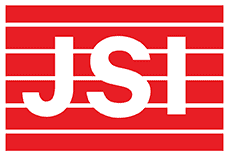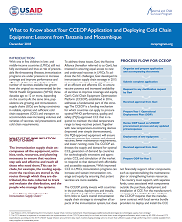With one in five children in low- and middle-income countries (LMICs) still not fully vaccinated and thus at risk of preventable, immunization
programs are under pressure to increase coverage and improve performance and efficiency. Adding to that challenge, the number of vaccines available has grown from the original six recommended by the World Health Organization (WHO) three decades ago to 12 or more, depending on the country. At the same time, populations are growing, and immunization supply chains (iSCs) are facing constraints in reliable, optimal, and sufficient cold chain equipment (CCE) and transport to accommodate ever-increasing volumes and varieties of vaccines, vial presentations, and cold chain requirements.
To address the iSC challenges, Gavi, the Vaccine Alliance, developed its immunization supply chain strategy in 2015 to increase attention on the importance of an efficient and effective iSC to ensure vaccine potency and increased availability of vaccines to improve coverage and equity. Gavi’s Cold Chain Equipment Optimization Platform (CCEOP), established in 2016, addresses a fundamental part of this strategy by acting as a funding mechanism for which countries can apply to procure optimal WHO performance, quality, and safety (PQS)-approved CCE that is required to maintain the ideal temperature range to keep vaccines potent.
USAID’s flagship Maternal and Child Survival Program is providing technical assistance to the ministries of health in Tanzania and Mozambique in the application processes. This document aims to highlight experiences in both countries in an effort to provide insights and lessons learned for other countries eligible for CCEOP. JSI/MCSP. 2018.


